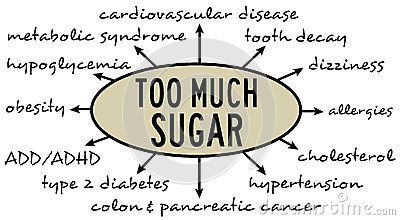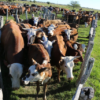Steps to Health Independence
By Arlean Kelley with Dr. Kevin Conners
(Editor note: Taken directly from material provided by Dr. Kevin Conners.)
What do cancer cells feed on?
Cancer cells breathe anaerobically. Anaerobically means that they thrive in an environment that lacks oxygen. They also consume 7-8 times more glucose (sugar) than normal cells. Since cancer cells are so inefficient compared to aerobic (oxygen-based) metabolism, cancer has a huge appetite for sugar. This is the reason that, if you consume a lot of sugar—in desserts, sodas, and other forms—you promote cancer growth in your body.
Less well known is the fact that cancers have an equally big appetite for glutamine. Glutamine is an amino acid. It is the most important vehicle in the blood. that brings the nitrogen to the cancer cells so they can use it to make the proteins that they need to make more cancer cells. If the glutamine supply goes to zero, tumor growth goes to zero.
Therefore, for cancer cells to survive, they need three conditions:
- Availability of sugar
- Less oxygen in the environment
- Plenty of glutamine
As you can see, one way to reduce growth of cancer cells is to starve them of the food sources that they need to survive, and incease the amount of oxygen in the blood, which they hate!
A rich source of glutamine is red meats. This is why excess consumption of red meats and other animal protein promotes tumor growth. Since normal cells also require glucose and glutamine, we don’t want to reduce those to zero. Consumption in small quantities, along with fruits and vegetables seems to be best.
Glutamine-rich foods that should be avoided in cancer:
- Red meats (fish and eggs are better in small quantities)
- All dairy products except cottage cheese
- Wheat (it’s rich in glutamine)
Sugar-rich foods such as:
- All refined sugar products
- All refined foods (white flour products, white rice)
- Fruit juices. Home made vegetable juices are fine and highly encouraged in the Gerson Therapy program which we highly recommend!)
Foods that are disease-causing in general:
- High saturated fats (animal fats)
- Trans fats from fried foods and hydrogenated fats in margarine
- All food additives, coloring agents and preservatives
With regards to a cancer treatment, every food that we eat or drink can be categorized into several different categories:
1) Foods that feed cancer cells such as refined sugar, refined flour, soda pop, dairy products, etc.
2) Foods that cause cancer (e.g. trans fatty acids [margarine, French fries and virtually every other processed food you buy], aspartame [Diet Coke, NutraSweet, Equal, etc.], MSG, polyunsaturated oils [e.g. corn oil], etc.)
3) Foods that directly interfere with alternative treatments for cancer (e.g. chlorine, fluoride, alcohol, coffee, etc.)
4) Foods that occupy and distract the immune system from focusing on killing the cancer cells (e.g. beef, turkey, etc.)
5) Foods high in nutrients that kill cancer cells, stop them from spreading, or in some other way help treat the cancer: purple grapes with seeds and skin, red raspberries with seeds, strawberries with seeds, broccoli, cauliflower, several herbs, carrots, pineapples, almonds, etc.)
Sugar and Glutamine
As stated above the health-building diet should limit sugar and glutamine consumption. Researchers at Huntsman Cancer Institute (HCI), University of Utah, have uncovered new information on the notion that sugar “feeds” tumors. The findings may have implications for other disease, such as diabetes and Metabolic Syndrome. The following quote is from the journal Proceedings of the National Academy of Sciences (PNAS).
“It’s been known since 1923 that tumor cells use a lot more glucose than normal cells. Our research helps show how this process takes place, and how it might be stopped to control tumor growth,” says Don Ayer, Ph.D., a Huntsman Cancer Institute investigator and professor in the Department of Oncological Sciences at the University of Utah.
Glucose and glutamine are both essential for cell growth, and it was long assumed they operated independently, but Ayer’s research shows they are inter-dependent. During both normal and cancerous cell growth, a cellular process takes place that involves both glucose (sugar) and glutamine (an amino acid). Ayer discovered that by restricting glutamine availability, glucose cannot be well utilized by cancer cells. “Essentially, if you don’t have glutamine, the cell is short circuited due to a lack of glucose, which halts the growth of the tumor cell,” Ayer says.
The research, spearheaded by Mohan Kaadige, Ph.D., a post-doctoral fellow in Ayer’s lab, focused on MondoA, a protein that is responsible for turning genes on and off. In the presence of glutamine, MondoA blocks the expression of a gene called TXNIP. TXNIP is thought to be a tumor suppressor, but when it’s blocked by MondoA, it allows cancer cells to take up and utilize glucose as its primary energy source, which in turn drives tumor growth.
Ayer says the next step in his research is to develop animal models to test his ideas about how MondoA and TXNIP control cell growth. “If we can understand that, we can break the cycle of glucose utilization which could be beneficial in the treatment of cancer,” Ayer says.
So, make sure you are not taking any glutamine in your supplements. Since this is an amino acid, you would most likely find it in a protein powder. Another common source of glutamine would be in products to heal the gut. Glutamine is a primary player in intestinal healing and though healing intestinal permeability issues (leaky gut syndrome) is important for cancer patients, do NOT use a product with glutamine!
As stated, the above article was written from material provided to us by Dr. Kevin Conners. Dr. Conners is certified in Functional Neurology and has had over 300 hours postgraduate study in the Autism Spectrum Disorders. He is trained in Epigenetic Clinical Methylation and Nutrigenomics and is a practicing Applied Kinesiologist with an emphasis on Botanical Medicine and Homeopathy.
Dr. Conners has authored 8 books, “Stop Fighting Cancer and Start Treating the Cause”, “Help, My Body is Killing Me”, “Beating Chronic Lyme”, “You’re Crazy – and other foolish things doctors tell patients needing brain therapy”, “Lyme Brain”, “The 3 Phases of Lyme”, “Is Hell the Only Difference”, and “23 Steps to Freedom” All are available on Amazon Dr. Conners web site is http://www.connersclinic.com/.
—————————————————
(Editor comment: Several months ago I posted about my own recovery from several different health problems including cancer and arthritis. That was 16 years ago and a recent checkup showed that all my numbers are normal, and I’m on no prescriptions today. I don’t need them.
As promised then, I have written a report setting forth exactly what I did to get well without normal medical intervention. I hope that the information will inspire you to resolve to reach for great health and greater independence. This account of my recovery is free to subscribers who request it, but if you are not a subscriber, no problem, just leave your email and we’ll add you in. Click the link below.
To your good health . . . and until we meet again next week,
Arlean
Click Here to get report
// ]]>








Leave a Reply